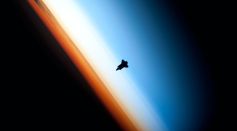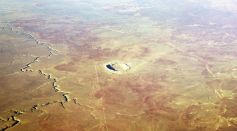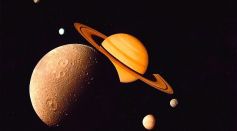Tags: Earth

Unraveling Earth's Mysteries: 8.5-Year Inner Core Wobble and Tilt Dynamics Confirmed by Researchers

China's Shenlong Space Plane Sparks Intrigue with Six Mystery Objects in Earth Orbit
Halley’s Comet Finally Heads Back to the Sun After Reaching Aphelion, Begins Its 38-Year Long Journey Back to Earth
HOTSAT-1's Triumph and Turmoil: Earth's Pioneering Space Thermometer Faces an Unexpected Freeze

Universe's First Clues to Nuclear Fission Hint at Ancient Stars Crafting Heavier Elements Than Ever Found on Earth
Mars’ Atmosphere Swells Nearly 4 Times Its Usual Size Without Solar Wind
NASA's Voyager 1 Probe Faces Data Transmission Issue That Might Take Weeks To Be Solved

Curveball Asteroids: Study Suggests Unusual Spins Shape Earth's Craters, Including Arizona's Barringer Crater

Mysterious Material and Organic Clues from Bennu: Scientists Puzzled Over Unusual Material in Samples from NASA's OSIRIS-REx Mission
Green ‘Ghosts’ in Earth’s Upper Atmosphere Involves Large-Scale Electric Discharges [Study]
12-Billion-Year-Old and Largest Water Reservoir in Universe Discovered Floating Around a Massive Feeding Black Hole

Are Aliens Watching Us? NASA Monitors the Sky for Unidentified Aerial Phenomena, Continues the Quest for Extraterrestrial Probes

Earth's Future: Will Humans Cease Before the Planet?
Giant Hole in Sun Wider Than 60 Earths, 5 Times Jupiter’s Diameter Spewing Powerful Solar Wind

Saturn's Moon Enceladus a Primary Target for NASA's Quest for Life Beyond Earth

Can a Passing Star Save Earth? Scientists Assess Odds Amid the Sun's Fiery Fate

NASA Collaborates With ISRO on Groundbreaking Earth-Observing Mission With NISAR Satellite Launching in 2024

Almost X-Class-Level Solar Flare Sends Huge Coronal Mass Ejection Towards Earth That Could Hit the Planet, Trigger Geomagnetic Storm
Earth’s Magnetic Field Protects People From Radiation; What Happens When It Flips?
NASA Shares Challenges in Continuing Venus Exploration
Most Popular

Ancient Hotspot Found to Have Created Great Lakes 300 Million Years Ago

Mysterious Structures Discovered Beneath the Pacific Ocean, Puzzle Scientists

Largest Known Volcanic Aquifer Discovered Beneath Oregon's Cascades

New 'Supergiant' Sea Bug Found in South China Sea, Named After Darth Vader





